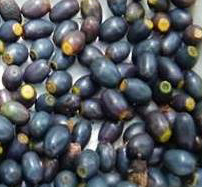
Cinnamon cultivation begins with quality plants, achieved through either seed or vegetative propagation. Seed propagation is preferred for its cost-effectiveness and convenience.
Seed Propagation
- Cinnamon seeds are primarily available once a year (June – July).
- To cultivate high-quality seed-propagated plants, several critical steps must be followed:
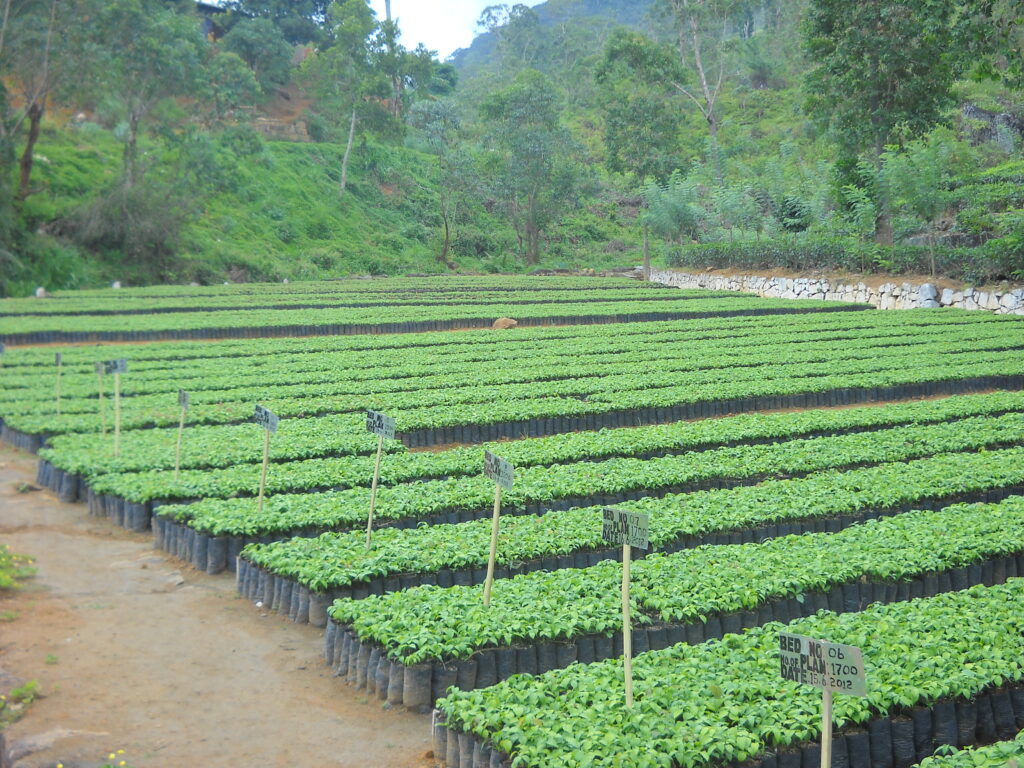
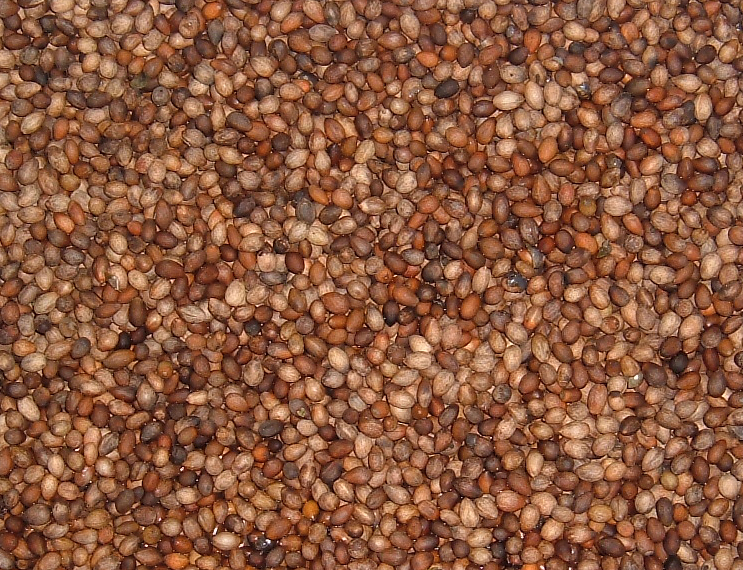
Selecting a Suitable Nursery location
- Cinnamon thrives in sunny conditions, necessitating the selection of a nursery site that receives ample sunlight. Optimal conditions include flat terrain with excellent drainage, adequate water availability, and nearby transport facilities. Minimizing pest and disease prevalence in the vicinity is also essential for successful nursery management.
Selecting Quality Seeds and Germination
Choosing the right seeds and ensuring successful germination are crucial for producing healthy cinnamon plants:
- Selecting Quality Seeds: Opt for well-ripened seeds that are purple in color and larger in size. These characteristics ensure robust seedlings with uniform growth.
- Seed Preparation: After harvesting the fruits, remove the pericarp and wash the seeds thoroughly with clean water. To maintain viability, dry the seeds on a shaded surface in a well-ventilated area. Properly dried seeds can retain viability for up to two weeks, facilitating higher germination rates when promptly planted. Prolonged storage diminishes seed viability, underscoring the importance of timely planting for optimal results.
Preparation of Nursery Pots
To ensure optimal growth of cinnamon seedlings, proper preparation of nursery pots is essential:
- Recommended Pot Size: The recommended pot size is 20 × 12.5 cm (8 × 5 inches). This size is ideal for accommodating seedlings during their nursery phase.
- Material Choice: Use 250-gauge thick black polythene to construct the pots. This material helps maintain pot integrity over the 6-month nursery period, preventing damage.
- Drainage Holes: To regulate moisture levels and prevent the tap root from contacting the ground, make four drainage holes approximately 2.5 cm above the pot’s base. These holes facilitate proper drainage, essential for healthy root development and overall plant vigor.
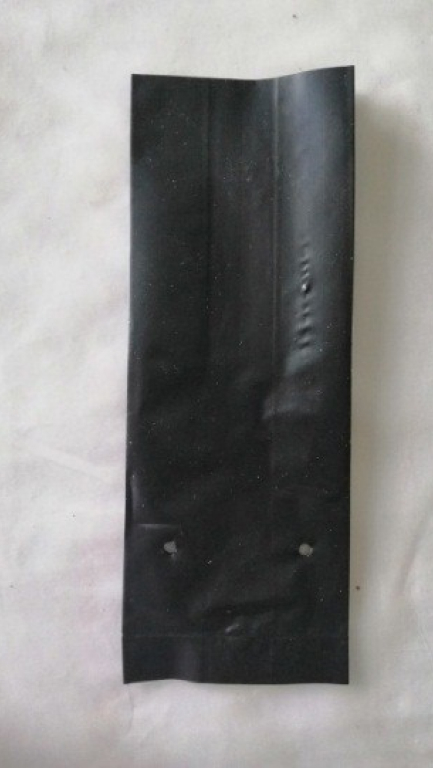
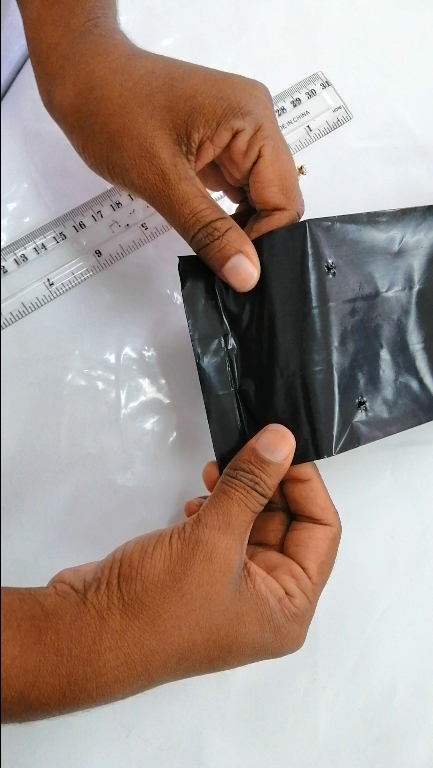
Filling the Pots and Nursery Preparation
- Pot Filling: When filling polythene pots with nursery mix, leave approximately 2 cm from the top of the pot. Fill the pot halfway, firmly tapping it on the ground to stabilize the mixture, and then complete filling the pot to the top.
- Nursery Setup: Ensure the nursery structure and bins are well-packed to facilitate efficient management activities throughout the nursery period.
Seed Planting
- Seed Placement: Begin by evenly placing 8-10 cinnamon seeds in a single pot. Cover the seeds with nursery potting mix or a thin layer of soil (about 0.5 cm). It’s beneficial to cover the pot with a blanket-like coir to maintain moisture and protect the seeds during irrigation.
- Germination: Healthy seeds typically germinate within approximately two weeks after planting, provided optimal conditions are maintained.
Nursery Management
- Shading: Initially, provide temporary shade approximately 2 feet above the nursery for about two months after planting the seeds. Gradually acclimate the seedlings to full sunlight over the remaining nursery period. Adjust shading as needed during exceptionally dry periods to prevent stress.
- Watering: Water seedlings as required, with particular attention during their early growth stages. Regularly monitor for signs of disease and pest damage in the nursery. Promptly take necessary steps to control any issues detected at an early stage.
- Field Establishment: Cinnamon seedlings are typically ready for transplantation into the field within 4-6 months after planting.
- Extended Nursery Period: If seedlings are to remain in the nursery for more than six months, consider applying a polythene layer on the nursery floor to enhance moisture retention and maintain optimal growing conditions.
These practices ensure that cinnamon seedlings develop robustly in the nursery, setting a strong foundation for successful cultivation in the field.
Characteristics of Plant Pots Suitable for Field Planting
To ensure successful field planting of cinnamon seedlings, it is essential that the plant pots exhibit the following characteristics:
- Age of the Pot: The pot should be more than four months old to ensure stability and durability during the growth period.
- Number of Plants per Pot: Ideally, each pot should contain 5 – 8 well-grown plants, ensuring sufficient density for optimal growth and coverage in the field.
- Plant Height: Plants should reach a height of approximately 15 cm (6 inches) from the rim of the pot. This height ensures that the plants are robust enough for transplantation and have developed a strong root system.
- Leaf Development: Each plant should display three or four well-developed leaf whorls. This indicates healthy growth and readiness for adaptation to the field environment.
- Health Condition: Plants must be free from disease and insect damage. This ensures that the plants are robust and less susceptible to stress after transplantation.
- Even Seed Distribution: Seeds should have been planted evenly throughout the pot during the nursery phase. This promotes uniform growth and ensures that all plants receive equal access to nutrients and space.
- Container Integrity: The polythene container should not be damaged. A intact container helps maintain the structural integrity of the nursery environment and supports healthy root development.
- Top Growth: The tops of the plants should not have grown out of the pot. Proper containment within the pot indicates that the plants have been managed effectively in the nursery and are ready for transplantation.
These characteristics collectively ensure that cinnamon seedlings are well-prepared for successful transplantation into the field, promoting healthy growth and establishment in their new environment.
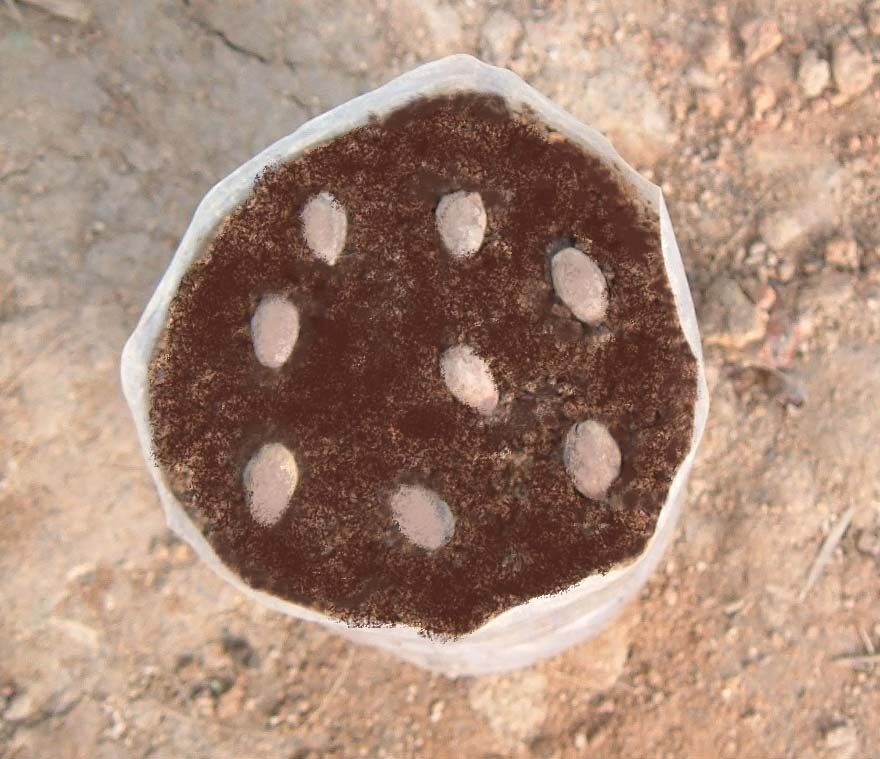
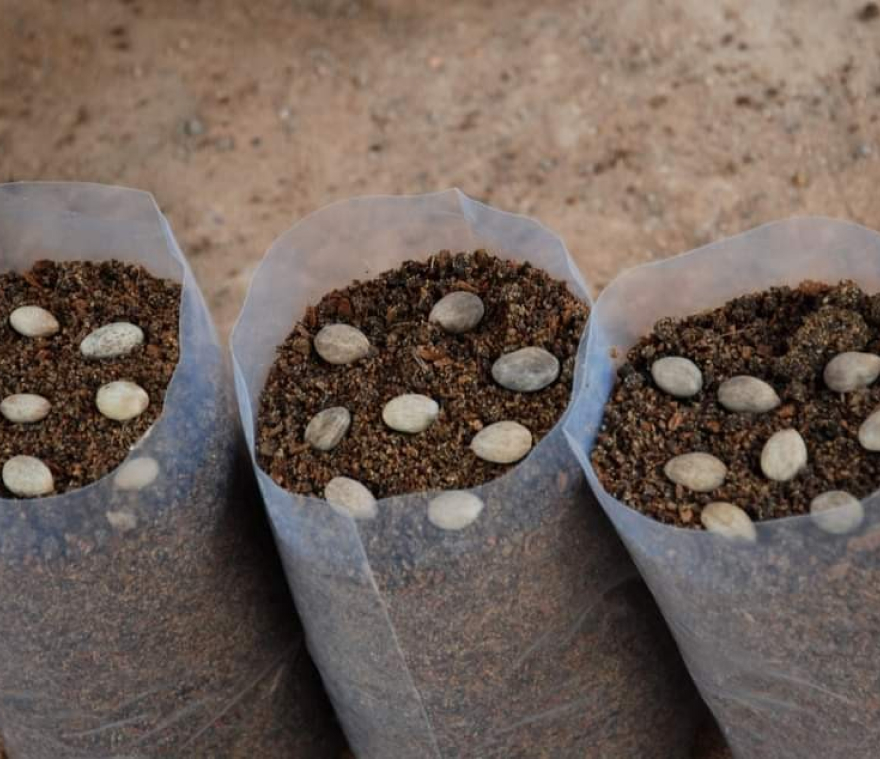
Filling the pots, preparing the nursery
- When filling polythene pots with nursery mix, leave 2 cm from the top of the pot. Fill the pot halfway, tap it well on the ground to stabilize the mixture, and then fill the rest of the pot.
- When setting up the nursery, pack the nursery structure and bins to facilitate management activities carried out in the nursery.
Seed planting
- Begin by placing 8-10 cinnamon seeds evenly in a single pot and covering them with nursery potting mix or a thin layer of soil (about 0.5cm). It’s best to then cover the pot with a blanket-like coir to protect the moisture and prevent the seeds from being exposed during irrigation.
- Healthy seeds should begin to germinate around two weeks after planting.
Nursery Management
- Temporary shade should be provided about 2 feet above for about 2 months after planting the seeds. Then it should be gradually acclimated to sunlight and fully exposed to sunlight during the rest of the nursery period. But shade should be provided as per the requirement during extremely dry periods.
- Watering should be done as needed and especially when the plants are young, more care should be taken about this. Care should be taken frequently about disease and pest damage in the nursery and if such cases are detected, necessary steps should be taken to control the condition at the initial stage.
- The seeds can be established in the field within 4-6 months of planting.
- If the plants are to be kept in the nursery for more than 6 months, it is advisable to apply a polythene layer on the nursery floor
Characteristics that should be present in a plant pot suitable for planting in the field:
- The age of a plant pot should be more than four months.
- The pot should have 5 – 8 well-grown plants.
- The height of the plants should be 15 cm (6 inches) from the pot
- The pot should have three or four well-developed leaf whorls.
- The plants should be free from disease and insect damage.
- Seeds should have been planted evenly throughout the pot.
- The polythene container should not have been damaged.
- The tops of the plants should not have grown out of the pot.
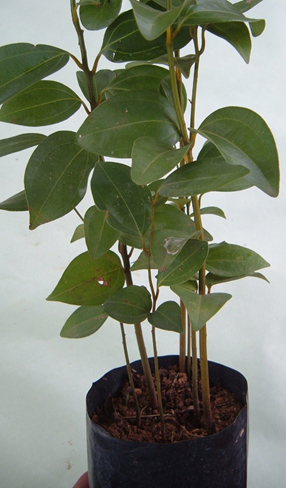
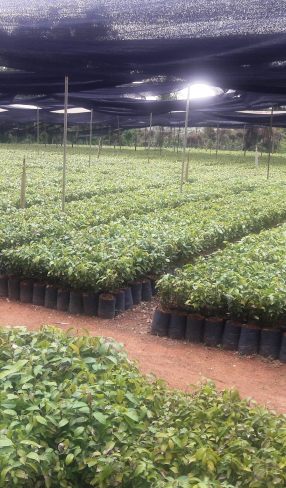
Vegetative propagation
Vegetative propagation is crucial for cinnamon cultivation due to the variability in morphological characteristics, yield, oil percentage, and overall quality of seedlings resulting from sexual reproduction. As cinnamon is a bisexual plant, seeds can produce offspring with diverse traits. Therefore, to ensure uniformity and quality in cinnamon plants, propagation methods such as cuttings are employed. This method allows growers to replicate desirable traits from selected high-quality mother plants, thereby maintaining consistency in characteristics like growth pattern, yield potential, and essential oil content. By using vegetative propagation techniques, growers can enhance the predictability and reliability of cinnamon cultivation, ensuring a more uniform and productive crop.
Selection of Cuttings
Selection of suitable cuttings for cinnamon propagation involves choosing sections of semi-hardwood that possess active lateral buds. These cuttings are typically taken from the lower parts of the bush where the wood is not too soft or too hard, ensuring optimal growth potential.
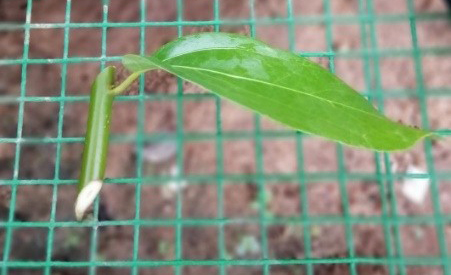
When cutting branches from selected mother plants, it’s essential to follow proper techniques to maintain cutting viability:
- Timing and Tools: Cut branches early in the morning when the plant tissues are hydrated and less stressed. Use a sharp, clean blade to make precise cuts to avoid unnecessary damage.
- Handling and Transport: Immediately after cutting, place the cuttings in a bowl of water. This prevents dehydration and ensures the cuttings remain viable during transport from the field to the nursery.
- Preparation for Planting: Prepare the cuttings by ensuring each cutting has at least one leaf that is about two inches long and an active bud. This leaf is crucial for photosynthesis and initial growth once planted.
- Water Conditioning: Keep the cuttings submerged in water until they are ready to be planted. This helps maintain their hydration levels and ensures they are in optimal condition for rooting.
By adhering to these guidelines, growers can maximize the success rate of cinnamon propagation through cuttings, promoting uniform growth and desirable characteristics in the propagated plants.
Nursery Preparation and Planting
Nursery preparation and planting of cuttings for cinnamon propagation involves several critical steps to ensure successful growth and establishment:
- Nursery Setup: Create a dedicated nursery area for vegetatively propagated plants, ideally in a propagator or a polythene shed constructed with 500-gauge transparent polythene. This setup is typically placed inside a net house with 60-70% shade to provide optimal growing conditions.
- Potting Mixture: Use the same potting mixture as used for seed plants. Ensure the pot is fully filled with the mixture. Before planting the cuttings, compact the mixture well into the pot by gently filling it with water and pressing it by hand. This helps stabilize the cuttings and promotes initial root growth.
- Planting Cuttings: Plant 2 or 3 cuttings per pot. Orient the leaves of each cutting in the same direction to avoid one leaf covering the bud of another cutting. If the leaves are large, trim them by cutting 1/3 to 1/2 of the leaf to reduce moisture loss and balance energy allocation.
- Watering and Protection: After planting, water the cuttings thoroughly. Apply a fungicide containing Tebuconazole to protect against fungal diseases, ensuring all leaves are well-covered. Seal the polythene cover of the propagator tightly with soil at the perimeter to conserve moisture and maintain a humid environment essential for rooting.
- Maintenance and Monitoring: Four weeks after planting, open the propagator for the first time to inspect and perform weeding and additional watering as needed. Repeat this process at 6 weeks and 8 weeks. By the 10th week, the propagator should remain open permanently to acclimate the plants gradually to outdoor conditions.
- Training and Growth: Conduct training to help plants adapt to environmental conditions. Increase exposure time to sunlight gradually within the nursery itself. After approximately 4 months, the plants should be sufficiently acclimatized and ready to be transplanted into the field.
- Transplanting: After 6 months of growth in the nursery, the cinnamon plants are ready for transplantation into the field. Ensure proper handling during transplanting to minimize stress and promote continued healthy growth.
By following these steps meticulously, growers can optimize the success of propagating cinnamon through cuttings, ensuring uniform growth and desirable plant characteristics for future cultivation.
